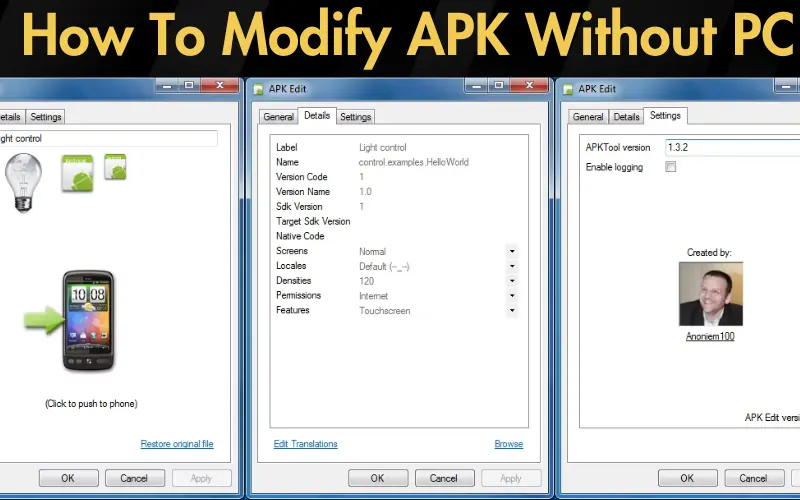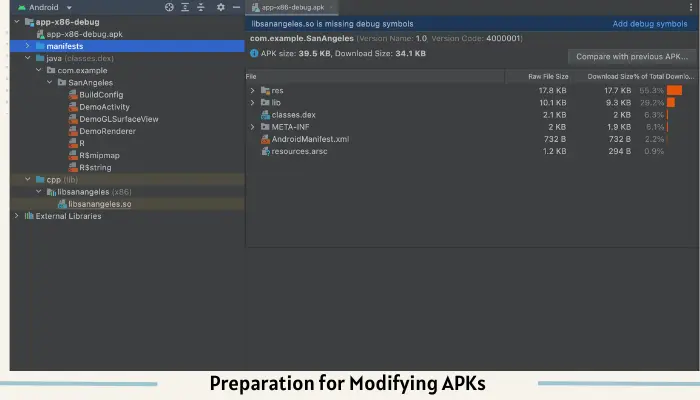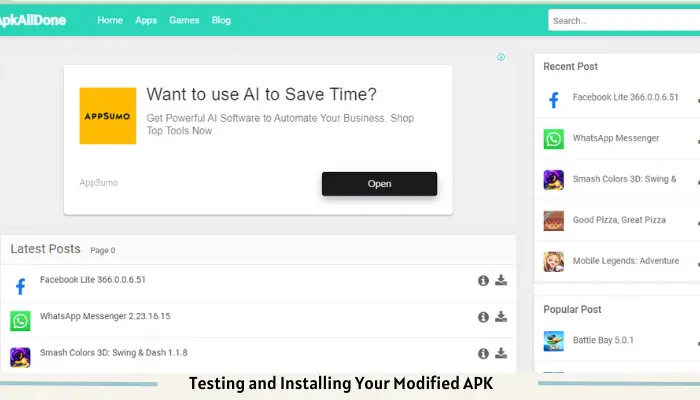How To Modify APK Without PC on Android in 2024

In the ever-evolving landscape of mobile apps, the allure of customization has drawn many into the realm of APK file modification. APK files, the backbone of Android applications, offer a gateway to enhancing app functionality beyond standard configurations. The desire to personalize, improve, and unlock new features within these files is strong. However, the common belief that such modifications require technical expertise and a PC has deterred many.
This article breaks down those barriers, providing a straightforward guide on How To Modify APK Without PC directly from your smartphone, no PC required. We’ll walk you through understanding APK files, preparing for modifications, and selecting the right tools for the job.
| Tool Name | Use Case | Key Features | User Level |
|---|---|---|---|
| APK Editor | Simple text and image modifications | User-friendly interface, direct APK editing without decompile | Beginner |
| APKTool Mobile | In-depth modification and analysis | Decompiling and recompiling APKs, code editing | Intermediate |
| MT Manager | Comprehensive APK management | Dual-pane interface, file management, editing, and debugging | Advanced |
Understanding APK Files
This table provides a snapshot of the tools available for modifying APK files directly from your mobile device, catering to various levels of expertise from beginners to advanced users. Each tool offers unique features designed to facilitate specific aspects of APK modification, ensuring that users can find the right tool for their needs. Whether you’re looking to make simple changes or dive deep into the app’s structure and code, there’s a tool that can help you achieve your customization goals without the need for a PC.
What is an APK file? An APK (Android Package Kit) file is the file format used by the Android operating system to distribute and install mobile apps. Like a box containing all an app’s components, including its code, resources, assets, certificates, and manifest file, APKs are the complete package for Android apps.
Why modify APK files? Modifying APK files allows users to customize apps to their liking, unlock hidden features, bypass restrictions, remove ads, and more. It’s a way to tailor the app experience to fit individual needs and preferences, often enhancing the overall utility and enjoyment of the app.
Preparation for Modifying APKs
Backup your data: Why it’s crucial Before diving into APK modification, backing up your data is essential. This precautionary step ensures that your original data remains safe and recoverable in the event of an error or issue. It’s about safeguarding your digital life while you experiment with app customization.
Selecting the right APK modification app Choosing an app for modifying APKs on your mobile device is critical. The right tool should offer a balance of user-friendliness, powerful features, and reliability. Apps like APK Editor, APKTool Mobile, and MT Manager stand out for their capability to handle a wide range of modification needs without requiring access to a PC.

Tools for Modifying APK Files Without a PC
Overview of APK Editor, APKTool Mobile, and MT Manager
- APK Editor: A user-friendly app that allows simple modifications such as text changes, image replacement, and layout adjustments. It’s suitable for beginners.
- APKTool Mobile: Offers more in-depth modifications, including decompiling and recompiling APKs. It caters to users with intermediate knowledge.
- MT Manager: Combines the features of both APK Editor and APKTool Mobile, providing a comprehensive suite of editing tools. It’s ideal for advanced users seeking extensive modification capabilities.
Features and capabilities of each tool
Each tool has its unique set of features:
- APK Editor allows direct editing within the app, making modifications quick and straightforward.
- APKTool Mobile excels in detailed editing, allowing the app’s code to be viewed and edited.
- MT Manager provides a dual-pane interface for easier file management alongside powerful editing and debugging tools.
Choosing the right tool depends on your modification needs and technical comfort level. These tools empower users to modify APK files directly on their smartphones, bypassing the need for a PC and opening up a world of app customization possibilities.
Read our well Researched Latest Blog Posts
Step-by-Step Guide: Modifying APKs
Downloading the APK file you wish to modify: The first step in changing an APK is obtaining the APK file itself. You can download the desired APK file from various reputable online APK repositories. Ensure the source is trustworthy to avoid malware. Once you find the APK file, download it directly to your device.
Opening and editing the APK using your chosen tool: After downloading, open your selected APK modification app and load the APK file you wish to edit. These tools typically offer a straightforward interface to navigate the APC’s components. Depending on your app, you may edit text, images, or even the app’s code.
Tips for a successful modification process
Common Modifications
Removing ads: One of the most sought-after modifications is the removal of ads. This can often be achieved by identifying and turning off the code or settings responsible for displaying ads within the APC’s files.
Changing app layout or design: Modifying an app’s layout or design involves editing the APC’s resource files. This can include changing icons, colors, and layouts to personalize the app’s appearance to your preference.
Unlocking features or content: Some apps have features or content locked behind paywalls or other restrictions. Modifying the APK file can sometimes unlock these features, though respecting app developers’ rights and terms of service is essential.
Testing and Installing Your Modified APK
Steps to safely install the modified APK: Before installing your modified APK, ensure your device allows installations from unknown sources, which can typically be enabled in the security settings of your device. After allowing, use a file manager app to locate and install the modified APK file.

How to troubleshoot common installation issues
Best Practices for Modifying APK Files
Modifying APK files ventures into a gray area that demands high ethical consideration and respect for legality. Always modify apps for personal use and never redistribute modified APKs. It’s crucial to respect the intellectual property rights of app developers. Ensure any modifications do not infringe on the app’s terms of service or bypass monetization efforts unjustly.
Ensuring app functionality and stability: To maintain the functionality and stability of an app, test modifications extensively before regular use. Avoid over-modification, as excessive changes can destabilize the app, leading to crashes or data loss. Regular backups are essential to recover from any unintended consequences.
Advanced Tips for Experienced Users
For those looking to expand their APK modification skills, diving into the coding and structure of APK files can unveil new opportunities for customization. For instance, understanding the Android Manifest file can give insights into the app’s structure and potential areas for modification.
Resources for learning more about APK structure and coding: Several online resources can help deepen your understanding of APK structure and coding:
Conclusion
Modifying APK files without a PC opens up a world of customization, allowing users to tailor their app experiences to their personal preferences. This guide has walked you through the steps, tools, and practices necessary to safely and ethically modify APKs directly from your smartphone. While the process can enhance your app usage significantly, it’s essential to proceed with a responsible mindset, respecting both the legal boundaries and the hard work of app developers.
As you embark on this journey of app customization, remember that the goal is to improve your digital experience without compromising the integrity or functionality of the apps you love. Let’s embrace APK modification’s possibilities, exploring this fascinating aspect of app customization with care and respect.






